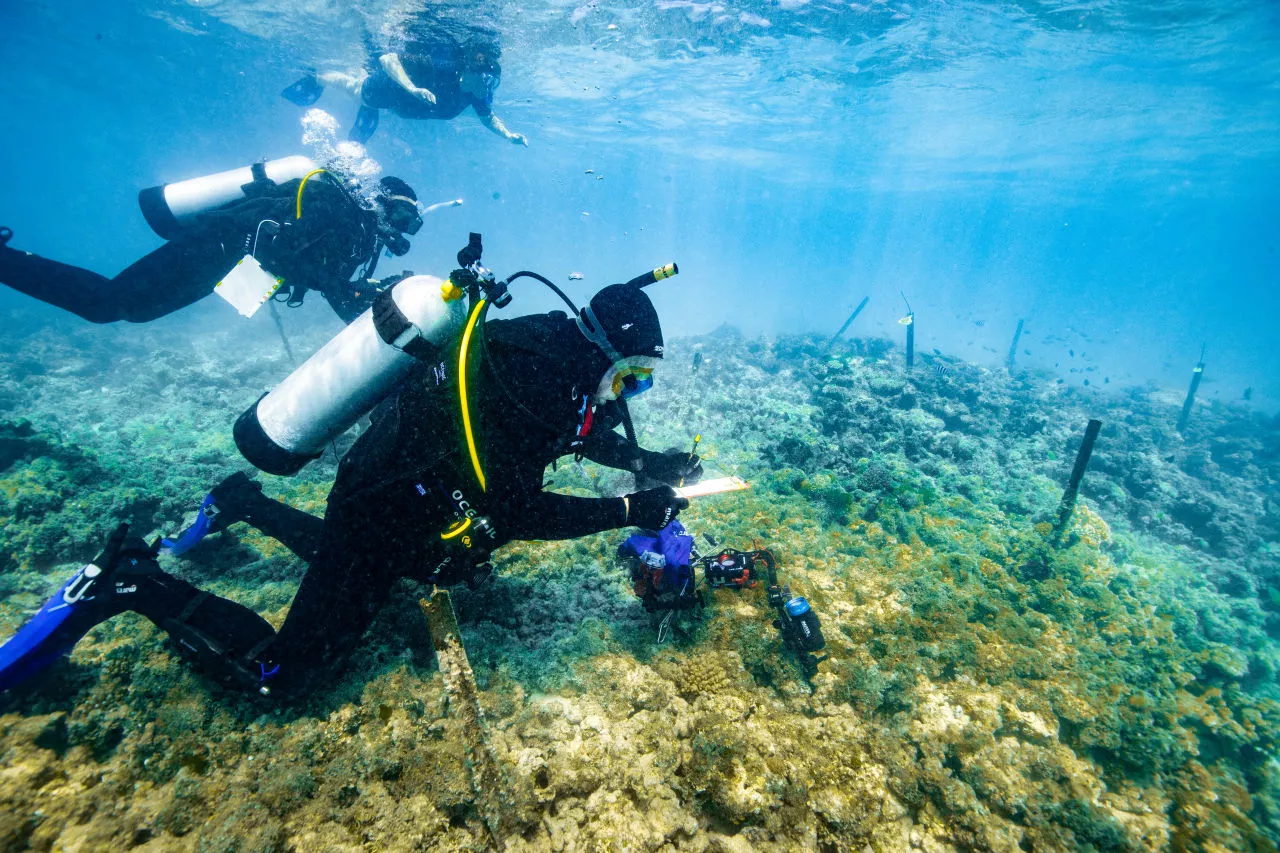If corals are going to survive on today's ecologically stressed reefs, they've gotta be tough. Scientists have therefore been developing a special "turbo-charged" coral, which has recently been found to be reproducing on the Great Barrier Reef.
Corals reproduce by releasing eggs and sperm (collectively known as spawn) into the water. Eggs that get fertilized by the sperm become free-swimming larvae, some of which eventually cling to surfaces on the sea floor and grow into polyps. Those polyps subsequently produce other connected polyps, forming into corals.
Unfortunately, environmental factors such as rising ocean temperatures stress larvae and mature corals alike, resulting in devastating coral bleaching events. That's where the Coral IVF (in vitro fertilization) process was designed to come in.
Developed by scientists at Australia's Great Barrier Reef Foundation, the technique begins with divers collecting excess spawn from healthy reefs. Most of those eggs and sperm would likely just end up being carried away in the currents, never becoming coral.
That spawn is placed in floating nurseries, where it produces larvae. Accompanying the spawn in the nurseries is a type of algae known as zooxanthellae. Coral larvae already take in this algae naturally – it's a symbiotic relationship, as the algae proceeds to provide the coral with food resulting from photosynthesis, while the coral provides the algae with shelter and nutrients.
In coral bleaching events, overly warm water temperatures cause the algae to produce chemicals called reactive oxygen species, which stress the coral. The coral responds by expelling the algae, depriving itself of the food source in the process.
That said, the zooxanthellae used in the Coral IVF process has been lab-grown to have a higher heat tolerance than normal, reducing its chances of being expelled. Additionally, it's introduced to the larvae far earlier than would happen in nature, helping them to acquire more energy, grow faster, and thus survive better.

In 2016, some of the algae-boosted Coral IVF larvae were manually introduced onto degraded areas of the Great Barrier Reef. It has now been found that in 22 of those sites, the larvae have grown into mature corals "the size of dinner plates." Not only have they survived a coral bleaching event, but the larger ones are now producing eggs and sperm of their own. This means that hopefully over time, they will help restore the reef.
"Coral IVF is the first project of its kind to re-establish coral on damaged reefs by collecting millions of coral eggs and sperm during the spawning season, growing them into baby corals and releasing them directly onto degraded areas of the reef," says the lead scientist, Southern Cross University’s Prof. Peter Harrison. "The ultimate aim of this process is to produce new breeding populations of corals in areas of the reef that no longer have enough live corals present due to being damaged by the effects of climate change."
Source: Great Barrier Reef Foundation




